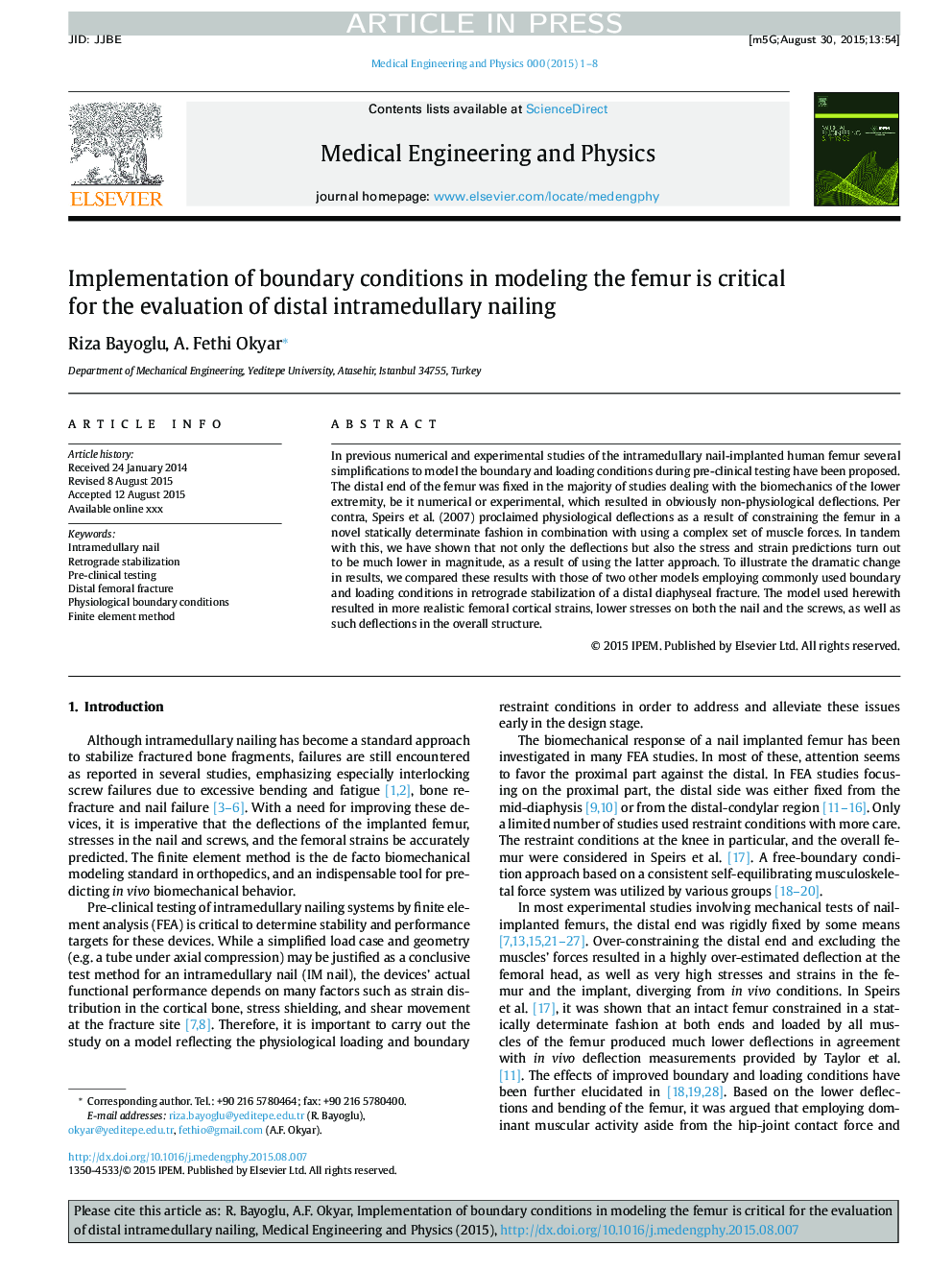| Article ID | Journal | Published Year | Pages | File Type |
|---|---|---|---|---|
| 10434958 | Medical Engineering & Physics | 2015 | 8 Pages |
Abstract
In previous numerical and experimental studies of the intramedullary nail-implanted human femur several simplifications to model the boundary and loading conditions during pre-clinical testing have been proposed. The distal end of the femur was fixed in the majority of studies dealing with the biomechanics of the lower extremity, be it numerical or experimental, which resulted in obviously non-physiological deflections. Per contra, Speirs et al. (2007) proclaimed physiological deflections as a result of constraining the femur in a novel statically determinate fashion in combination with using a complex set of muscle forces. In tandem with this, we have shown that not only the deflections but also the stress and strain predictions turn out to be much lower in magnitude, as a result of using the latter approach. To illustrate the dramatic change in results, we compared these results with those of two other models employing commonly used boundary and loading conditions in retrograde stabilization of a distal diaphyseal fracture. The model used herewith resulted in more realistic femoral cortical strains, lower stresses on both the nail and the screws, as well as such deflections in the overall structure.
Related Topics
Physical Sciences and Engineering
Engineering
Biomedical Engineering
Authors
Riza Bayoglu, A. Fethi Okyar,
